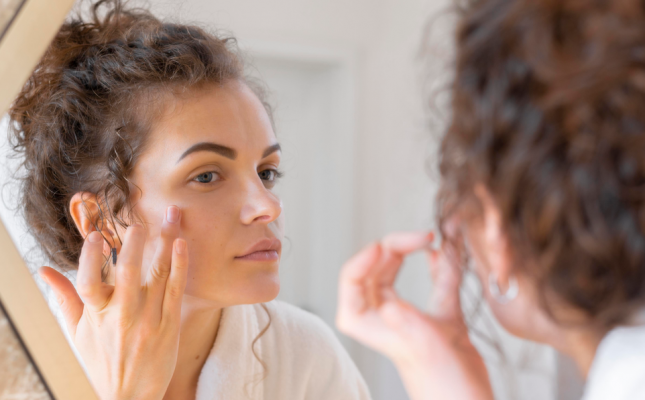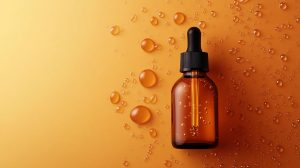Ever wondered why your skin seems to glow one week and break out the next? While many factors affect your complexion, hormonal fluctuations throughout your menstrual cycle are one of the most overlooked. These internal changes influence oil production, skin sensitivity, and even inflammation levels.
Understanding how your cycle impacts your skin allows you to tailor your skincare routine week by week. Let’s break it down so you can support your skin with exactly what it needs during each phase.
Week 1: SKINCARE Menstrual Cycle – Hydrate and Soothe
Your period marks the beginning of the cycle. During this time, estrogen and progesterone levels drop, leaving your skin more prone to dryness, sensitivity, and dullness.
What’s Happening:
- Skin may feel tight, dry, or irritated
- Natural oils are reduced
- Increased vulnerability to redness and inflammation
What to Do:
- Use hydrating serums with hyaluronic acid
- Apply moisturizers rich in ceramides to restore your skin barrier
- Avoid retinoids or harsh exfoliants
- Focus on soothing ingredients like aloe vera or chamomile
Hormones aren’t the only thing affecting how you feel during your period. Learn why your period feels worse during high temperatures:
Why Your Period Feels Worse in Summer
Week 2: Follicular Phase – Embrace the Glow
As your period ends, estrogen levels rise, which promotes collagen production and improved skin elasticity. This is often the phase where your skin looks its best—bright, balanced, and smooth.
What’s Happening:
- Better skin hydration
- Fewer breakouts
- Healthy glow and even texture
What to Do:
Feeling motivated this week? Pair your skincare with movement:
Lower Body Strength Exercises for Stronger Legs & Glutes
Week 3: Ovulatory Phase – Manage the Oil
Mid-cycle, estrogen peaks and testosterone rise, leading to an increase in sebum production. This can give you a natural glow, or trigger breakouts and oily skin.
What’s Happening:
- Oily skin, especially in the T-zone
- Clogged pores and occasional pimples
- Pore size may appear larger
What to Do:
- Use a lightweight, oil-free moisturizer
- Cleanse thoroughly to remove excess oil
- Use a clay mask to absorb sebum
- Spot treat with salicylic acid if needed
Diet plays a big role in managing hormonal imbalances and cooling the body. Curious about what to eat depending on your climate?
Cooling Foods for Hot Humid vs. Hot Dry Summers – What Works Best for Your Body
Week 4: Luteal Phase – Calm the Storm
After ovulation, progesterone rises, triggering oil production and inflammation. This is the phase where many women experience premenstrual breakouts, puffiness, or increased sensitivity.
What’s Happening:
- Cystic acne or small breakouts may emerge
- Skin may feel inflamed or congested
- Puffiness and uneven texture are common
What to Do:
- Continue gentle cleansing
- Incorporate niacinamide or tea tree oil to fight inflammation
- Stay hydrated and avoid over-washing
- Use non-stripping spot treatments
Hormonal shifts also impact postpartum skin. Learn how to care for it from the inside out:
Postpartum Nutrition Tips for New Moms
More From Living Healthy
Want to support your skin and body naturally throughout your cycle and beyond? Check out these helpful reads:
- Japanese Water Therapy and Its Many Benefits
- Unlock Radiant Skin: The Amazing Benefits of Vitamin C Serum
- The Importance of Regular Health Check-Ups
- Healthy Bulk Meals: Easy Recipes for the Week
Tune Into Your Skin – Every Week
Your skin is a reflection of your internal rhythms. Understanding your cycle not only helps you care for your complexion—it also fosters a deeper connection to your body. By adjusting your skincare routine with your hormones in mind, you can enjoy healthier, more balanced skin year-round.





